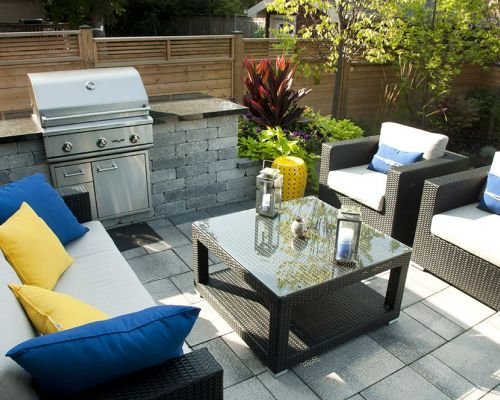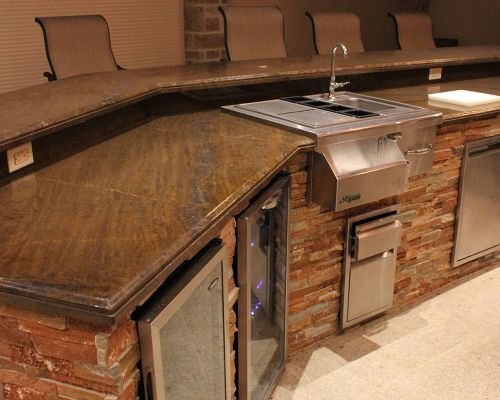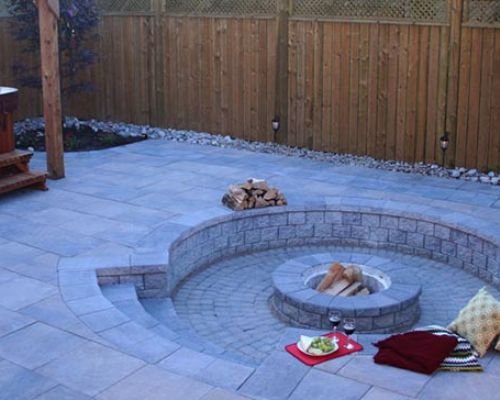Transforming Toronto yards into stunning outdoor retreats isn’t just about aesthetics—it’s about harmonizing beauty with sustainability in a city known for its seasonal extremes. How can homeowners craft spaces that are inviting, functional, and eco-friendly amid Toronto’s climate challenges? This guide reveals that thoughtful landscape design, native plants, permeable pavements, and rain gardens are key to creating resilient outdoor environments. It explores how integrated solutions like smart irrigation and solar lighting extend usability while reducing environmental impact. By balancing visual appeal with eco-conscious choices, homeowners can develop landscapes that support local ecosystems, conserve resources, and remain low-maintenance over time. The future of Toronto outdoor spaces promises innovation—embracing technological advances and biophilic design to foster urban resilience and biodiversity. Are we ready to reimagine outdoor living as a sustainable sanctuary? This approach ensures outdoor retreats that are not only beautiful but also responsible, adaptable, and deeply connected to nature.
Transform Your Toronto Outdoor Space with Expert Landscaping
Looking to elevate your outdoor living area in Toronto? Toronto Landscape & Design (TLD) offers exceptional services including natural stone installations, water gardens, irrigation systems, and retaining walls. Our award-winning designers take everything into consideration to craft personalized and stunning landscapes that enhance your property’s beauty and functionality. Whether you’re dreaming of a complete backyard makeover or small enhancements, our team is dedicated to delivering outstanding results. Start your transformation today by reaching out to us at mike@torontolandscapedesign.com or calling 1.416.644.0499. Discover how our expertise can turn your outdoor space into a captivating retreat with a backyard makeover that reflects your style and needs.

Transform Your Toronto Backyard into a Personal Oasis
Transforming a Toronto backyard into a welcoming outdoor retreat is about more than just planting a few flowers or laying paving stones. It’s about crafting a space where homeowners can unwind, entertain, and feel connected to nature—all within the city’s distinct climate. As urban living pushes more people to seek greener, more sustainable outdoor environments, thoughtful landscape design becomes essential. It’s not just about aesthetics; it’s about building functional, eco-friendly spaces that stand up to Toronto’s hot summers and cold winters.
A successful backyard transformation starts with clear goals. Whether the aim is a low-maintenance garden, an outdoor kitchen, or a cozy fire pit area, understanding these priorities guides every decision. Setting realistic expectations around budget and timeline early on helps keep projects aligned and prevents surprises. With careful planning, the final result becomes more than just beautiful—it becomes a space tailored to the homeowner’s lifestyle and values.
Listening to clients’ needs is vital. Some may prioritize striking visual elements, native plants, or wildlife support, while others seek practicality and ease of care. Incorporating native plants and sustainable materials ensures the yard remains resilient and easier to maintain over time. Choosing plants suited to Toronto’s seasonal extremes reduces water use and chemical dependence, making the landscape both environmentally friendly and cost-effective.
Toronto’s climate plays a crucial role in shaping outdoor design. Features like rain gardens and permeable pavements help manage seasonal rainfall naturally, supporting groundwater recharge and reducing runoff. These eco-conscious choices not only increase the landscape’s durability but also foster a sense of harmony with nature. When every element is thoughtfully integrated, the yard becomes an inviting space that can adapt to changing weather patterns without sacrificing beauty.
A well-designed backyard isn’t just visually appealing—it’s highly functional. Creating zones for relaxing, dining, gardening, or play maximizes space and comfort. Focal points like water features or sculptures add depth and interest, drawing the eye and enhancing the overall atmosphere. When design elements work together seamlessly, the yard transforms into a true outdoor retreat—one that’s as enjoyable to look at as it is to experience.
Building Resilient, Eco-Friendly Landscapes in Toronto
Sustainable landscaping in Toronto isn’t just a passing trend; it’s a smart approach that benefits both the environment and homeowners’ wallets. The foundation of eco-friendly outdoor design starts with selecting materials and plants that are naturally suited to local conditions. Native plants, for example, have evolved to thrive in Toronto’s seasonal extremes, requiring less water, fertilizers, and pesticides. This leads to healthier soil, fewer chemical runoff issues, and a landscape that’s easier to maintain over time.
Water conservation is a key principle. Toronto’s weather can be unpredictable, with heavy rains followed by dry spells. Installing drip irrigation systems paired with rain sensors ensures plants get just what they need without waste. Permeable pavements and rain gardens allow stormwater to soak into the ground, reducing runoff and supporting groundwater recharge. These features help create resilient landscapes that can adapt to changing weather patterns while reducing environmental impact.
Using recycled and locally sourced materials further enhances sustainability. Reclaimed wood, recycled stone, and eco-friendly hardscapes add character and reduce the environmental footprint of your yard. Durable, low-impact materials mean fewer repairs and replacements, which cuts down on waste and extends the lifespan of outdoor features. Incorporating these sustainable choices results in landscapes that are not only beautiful but also inherently responsible.
Designing with the environment in mind involves strategic placement of native plants and thoughtful zoning. Grouping plants with similar water and sunlight needs minimizes resource use and maintenance. Shaded areas created by native trees naturally cool the space, reducing the need for energy-consuming outdoor cooling devices. Such natural solutions make the yard more comfortable and energy-efficient, supporting a sustainable lifestyle.
Stormwater management is central to eco-friendly landscaping. Features like rain gardens and permeable surfaces help handle Toronto’s seasonal rainfall naturally, preventing water from overwhelming drainage systems. These systems promote groundwater recharge, reduce urban flooding, and increase overall landscape resilience. They also foster a healthier local ecosystem, benefiting pollinators and native wildlife.
Ongoing maintenance is vital to preserving the health and efficiency of a sustainable yard. Simple practices like mulching help retain moisture, while routine pruning keeps native plants vigorous. Regular checks on irrigation systems ensure they operate efficiently, avoiding unnecessary water waste. These small actions reinforce the landscape’s environmental benefits and keep it looking its best year-round.
Choosing eco-conscious materials and practices isn’t just good for the planet; it’s a practical way to save money and reduce effort over time. Recycled materials, water-saving irrigation, and native plantings all contribute to a low-maintenance, resilient landscape that remains vibrant despite Toronto’s seasonal shifts. When designed thoughtfully, a sustainable yard becomes a true reflection of eco-responsible living.
Ultimately, embracing these principles turns a simple outdoor space into a living example of harmony between beauty and sustainability. By integrating native plants, natural stormwater solutions, and eco-friendly materials, Toronto homeowners can craft outdoor retreats that are both stunning and responsible. This balanced approach ensures their landscape continues to thrive with minimal intervention, supporting both the environment and their enjoyment for years to come.

Creating Beautiful, Sustainable Outdoor Spaces in Toronto
Balancing aesthetics and sustainability in Toronto backyard projects means creating outdoor spaces that are both visually stunning and environmentally responsible without one compromising the other. Native plants are a cornerstone of this approach; they thrive naturally in Toronto’s climate, requiring less water, fertilizers, and pesticides. This not only keeps the landscape vibrant and healthy but also supports the local ecosystem and reduces chemical runoff. When plants are thoughtfully selected and grouped based on their sunlight and water needs, maintenance becomes easier and resource use diminishes.
Design features such as permeable paving and rain gardens serve dual purposes. They add visual interest while actively managing stormwater—preventing runoff, supporting groundwater recharge, and reducing urban flooding. When these elements are integrated seamlessly into the landscape, they feel like natural parts of the design rather than afterthoughts, elevating the yard’s overall appeal. Using eco-friendly materials like reclaimed wood or recycled stone further enhances this harmony, offering a stylish finish that aligns with sustainable principles.
Layout and zoning play a key role in maintaining this balance. Proper placement of trees and shrubs creates shaded areas that naturally cool the space, decreasing reliance on energy-consuming outdoor cooling devices. Thoughtful zoning ensures each part of the yard—whether for relaxing, dining, or gardening—serves a purpose without cluttering the space or detracting from its beauty. When every element is carefully considered, the yard feels cohesive, inviting, and functional.
Adding focal points such as water features or sculptures can deepen visual interest without sacrificing sustainability. When these features are designed with eco-friendly materials and water-saving technology, they become symbols of responsible design—beautiful yet practical. Subtle landscape lighting powered by solar energy extends usability into the evening and highlights key design elements, creating an inviting atmosphere that enhances the outdoor experience without increasing energy waste.
Achieving harmony between beauty and sustainability requires ongoing attention. Regular pruning, mulching, and routine checks on irrigation systems keep native plants vigorous and the landscape efficient. By choosing durable, eco-friendly materials and integrating natural systems, Toronto homeowners can craft outdoor retreats that are as responsible as they are breathtaking. When style and sustainability support each other, the result is a yard that not only looks great but also functions sustainably for years to come.
Designing Harmonious, Holistic Landscapes for Long-Term Enjoyment
Creating a successful holistic landscape design in Toronto begins with a thorough understanding of the site itself. Analyzing factors like soil quality, sunlight exposure, wind patterns, and existing structures helps ensure every element of the plan is grounded in the environment’s realities. This knowledge allows designers to select native plants, durable materials, and eco-friendly features that will thrive in Toronto’s seasonal climate, making the landscape both resilient and sustainable. By aligning design choices with natural conditions, the yard becomes a harmonious extension of its surroundings.
Listening carefully to the client’s needs shapes the entire process. Every homeowner brings a unique vision—whether it’s a peaceful retreat, a family-friendly space, or an outdoor entertainment area. Engaging in detailed conversations early on uncovers what truly matters—privacy, low maintenance, or aesthetic preferences—and ensures these priorities are seamlessly woven into the design. This collaborative approach fosters a sense of ownership and ensures the final result genuinely reflects the homeowner’s lifestyle and values.
A comprehensive plan balances beauty with functionality, zoning the yard into distinct areas like lounging spots, vegetable gardens, or play zones. Thoughtful placement of trees and shrubs creates natural shade and windbreaks, reducing energy costs and enhancing comfort. By organizing spaces thoughtfully, designers maximize utility while maintaining visual harmony. Every element is positioned to support the overall vision, resulting in an outdoor environment that feels cohesive, inviting, and tailored to the client’s needs.
Incorporating focal points such as water features, sculptures, or vibrant plant groupings adds visual interest and depth. When these elements are thoughtfully integrated with eco-friendly materials—like recycled stone or reclaimed wood—they elevate the design while supporting sustainability. These features serve as natural anchors, drawing the eye and creating a sense of place that enriches the entire yard. The result is a landscape that’s not only beautiful but also meaningful and environmentally responsible.
Design flexibility is key to adapting plans during execution. Unforeseen site conditions or evolving client preferences may require quick adjustments, but maintaining open communication keeps the project aligned. This ongoing dialogue ensures changes enhance the original vision without causing delays or compromising sustainability. By staying collaborative and responsive, designers can craft outdoor spaces that are both durable and reflective of the client’s desires, creating a truly holistic retreat that endures for years to come.

Innovating Toronto’s Outdoor Spaces for a Sustainable Future
The future of outdoor spaces in Toronto is poised for exciting innovation, blending technology with sustainable design principles. Smart irrigation systems that adapt to weather patterns and soil moisture levels are becoming more accessible, helping homeowners conserve water while maintaining lush, healthy landscapes. These eco-friendly systems reduce waste and ensure plants receive precisely what they need, even amid Toronto’s unpredictable rainfall and dry spells.
Meanwhile, solar-powered lighting is transforming how we extend outdoor living into the evening hours. Subtle, energy-efficient LEDs create inviting atmospheres without increasing energy bills or carbon footprints. As these technologies become more affordable and widespread, they’re helping turn ordinary yards into truly magical retreats that can be enjoyed day and night.
Materials are also evolving, with recycled composites and permeable pavements gaining popularity. These sustainable options provide stylish, durable surfaces that support natural water flow and reduce runoff—key features in climate-conscious design. Modular elements are giving homeowners the flexibility to reconfigure their outdoor spaces over time, adapting to changing needs without sacrificing style or environmental responsibility.
Biophilic design principles are increasingly guiding landscape development, emphasizing the integration of natural elements within urban environments. Green corridors, native plant gardens, and rain gardens are not only aesthetically pleasing but also vital for urban resilience. They help mitigate heat islands, support pollinators, and bolster ecosystems against climate change’s impacts, making outdoor spaces more than just beautiful—they’re vital environmental buffers.
Staying ahead of these trends requires continuous learning and adaptation. Landscape professionals are engaging with new certifications, attending industry workshops, and following emerging research to incorporate cutting-edge solutions. These efforts ensure that Toronto’s outdoor spaces remain innovative, sustainable, and aligned with global efforts for greener cities.
Technological advances, including AI-driven site analysis and design tools, are enhancing precision and customization. These innovations allow for smarter planning—optimizing plant placement, water management, and layout—resulting in outdoor retreats that are both beautiful and resilient. Homeowners benefit from landscapes that are not only visually appealing but also easier to maintain and more environmentally sound.
Looking forward, the integration of natural systems with advanced technology will define Toronto’s outdoor spaces. Projects will increasingly focus on creating ecosystems that support urban biodiversity while serving as personal retreats. This holistic approach marries innovation with responsibility, ensuring outdoor environments that are sustainable, functional, and inspiring.
As Toronto continues to grow, so will its outdoor design landscape—becoming more eco-conscious, technologically integrated, and tailored to local conditions. The future promises outdoor retreats that are as responsible as they are stunning, capable of thriving amid climate challenges while offering residents a peaceful connection to nature right in the heart of the city.